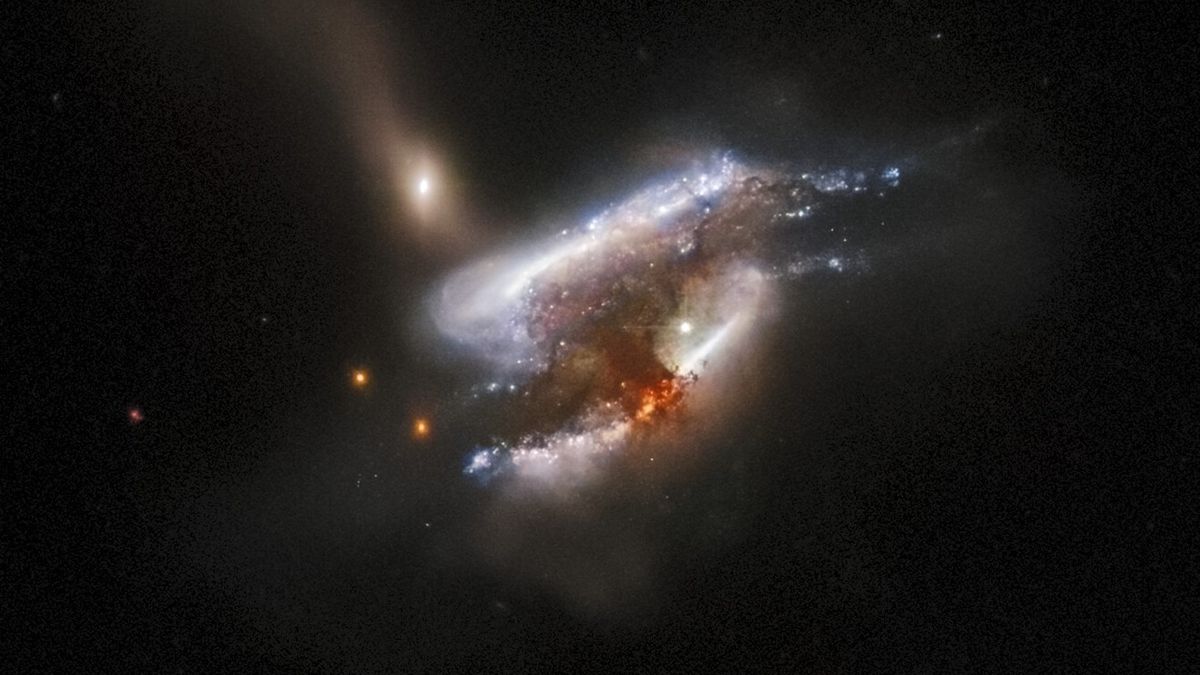Rare galaxy with three black holes leads astronomers to the most massive objects in the universe [View all]
By Robert Lea published about 14 hours ago
Scientists watched as a three-quasar system merged in a supercomputer simulation of the universe to birth a black hole 300 billion times as massive as the sun.

Three galaxies collide in this Hubble Space Telescope image. Mergers between three galaxies, each containing a supermassive black hole, may be responsible for creating rare 'ultramassive black holes,' the most massive objects in the universe. (Image credit: ESA/NASA)
Glimpsed only occasionally at the hearts of massive clusters of galaxies, ultramassive black holes are some of the largest and most elusive objects in the universe. These black hole behemoths have masses exceeding that of 10 billion suns, making them far more monstrous than even the supermassive black holes found at the centers of galaxies like the Milky Way, and their tremendous size has long perplexed astronomers.
Now, researchers studying a rare galaxy merger with three supermassive black holes at its center may have finally discovered the origins of these cosmic monsters.
Using a high-resolution cosmological simulation called ASTRID, the team modeled the evolution of the universe as it appeared about 11 billion years ago. In the simulation, the team witnessed the birth of an ultramassive black hole following the merger of the three galaxies. Each of these galaxies contained its own quasar, a supermassive black hole that feeds on gas and powers massive outbursts of radiation that can outshine all the stars in their host galaxies combined.
When the triple quasars met, they formed an even more massive black hole while simultaneously triggering a feeding frenzy that allowed the combined object to reach ultramassive status.
More:
https://www.livescience.com/rare-galaxy-with-three-black-holes-leads-astronomers-to-the-most-massive-objects-in-the-universe
